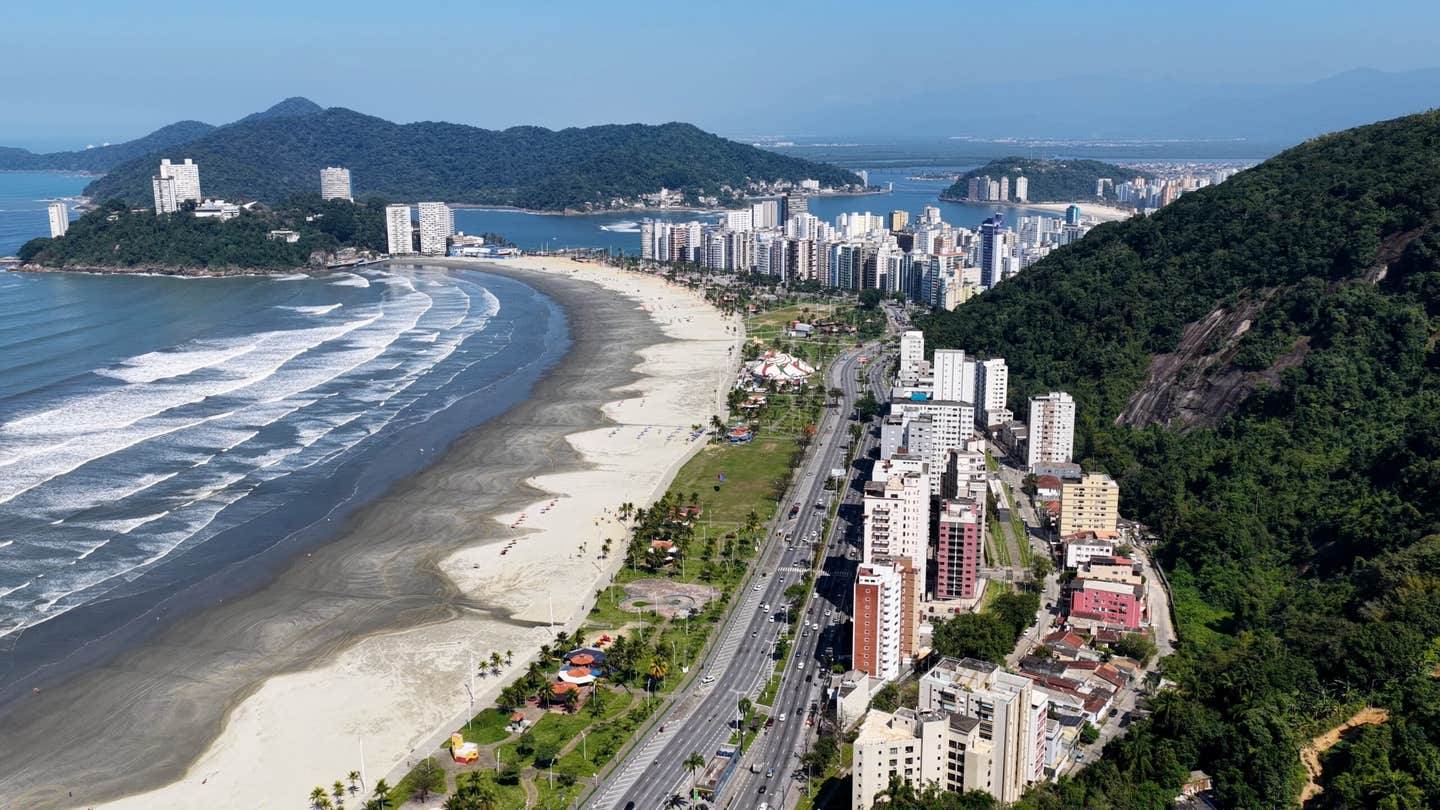Nearly half of the beaches on Earth will disappear by the end of the century, study finds
New study shows how rich and busy beaches are and how easily they can be weakened by the ways people use and build along the shore.

 Edited Vy: Joshua Shavit
Edited Vy: Joshua Shavit

Study shows hidden beach life declines as visitors and development increase along the São Paulo coast. (CREDIT: Shutterstock)
A stretch of sand can look simple at first. Waves slide in, families lay out towels, and children run across the warm surface. It is easy to forget that a living world moves under your feet and beneath the shallows.
A new study from the coast of São Paulo shows how rich and busy this unseen community is and how easily it can be weakened by the ways people use and build along the shore. The work reveals how the shape and energy of the coast still guide much of this life, yet growing human activity steadily reduces the variety and mass of creatures, especially in the zones that stay underwater most of the time.
Exploring an Entire Beach, Not Just the Sand You See
To understand how both natural conditions and urban growth shape this hidden biodiversity, researchers surveyed 30 beaches along 150 kilometers of shoreline. Some areas were quiet and almost untouched. Others sat beside ports, towns, and busy tourist spots. They sampled 90 sites from the dry upper beach to the surf zone during low spring tides. The team divided each site into five parts that ranged from dry sand above the drift line to shallow waters where waves break.
Each zone was sampled with smaller and larger corers pushed 20 centimeters into the sand. The approach helped capture tiny invertebrates and larger animals that often slip through other tools. Back in the lab, the team washed the sediment through fine sieves, sorted every animal, and measured species counts, the number of individuals, and biomass. Their work revealed a diverse community of 5,017 individual creatures and 172 taxa, with annelid worms making up the largest share of the population.
When they looked across the different zones, patterns became clear. The intertidal areas held more individuals, but the submerged areas held more species and more living mass. The surf zone alone contained 83 species, with worms and small crustaceans among the most common. These deeper spots, often ignored in beach planning, turned out to be biodiversity hotspots.
How Waves, Sand, and People Shape Life
The team measured physical conditions at each site, including wave height, sand slope, and grain size. They estimated how much influence nearby rivers had and measured microphytobenthos, tiny organisms that form the base of the food web. These factors helped build a Beach Index that describes how harsh or gentle a beach’s physical setting is. A higher value means a flatter beach with finer sand, wider surf, and conditions that often support more life.
They also created an Urbanization Index based on buildings at the shore, mechanical cleaning, visitor numbers, waste, vehicles on the sand, and distance from urban areas. Interestingly, the physical index and the urban index did not mirror one another. A beach could be naturally favorable but still have heavy development, and a less favorable beach could sit far from people.
Across all sites, the Beach Index was the strongest driver of biodiversity. Species richness, abundance, and biomass were all higher on gentle, dissipative beaches with fine grains and wide surf zones. The Urbanization Index did not show a simple linear pattern with biodiversity. Even so, when the team examined each variable more closely, the effects of human activity became clear. More buildings and more visitors were tied to drops in species richness and biomass. Mechanical grooming of sand lowered biomass in several zones. These findings suggest that even when the surface looks clean and inviting, the buried community below can be struggling.
Small animals that thrive in disturbed areas sometimes increased near urban centers. That change did not signal a healthy ecosystem. It showed a shift toward opportunistic species that replace a richer mix of life. Limited species may thrive, but the broader community shrinks.
Zone by zone, the study found that the biggest losses occurred in the shallow sublittoral and surf zones. These areas held the highest species richness and the greatest biomass, yet they were also the most vulnerable to pressure from visitors and shoreline construction. Fine sediment, gentle slopes, and higher microphytobenthos levels supported more life. In contrast, coarser grains, steeper slopes, and taller waves cut richness and abundance.
Human Activity, Rising Seas, and a Changing Coast
The results of this study fit into a larger warning from marine scientist Omar Defeo of Uruguay’s University of the Republic. Speaking at the FAPESP Day Uruguay symposium in Montevideo, he explained that beaches across South America and many parts of the world are undergoing what he calls “crushing.” This process happens as sea levels rise and development spreads across dunes and dry sand. The combined impact harms coastal life, disrupts fishing and tourism, and leaves cities more exposed to storms and erosion.
Defeo stressed that dunes, beaches, and submerged zones form one linked ecosystem. Sand moves back and forth between them as wind and waves interact. When development erases dunes, the coast loses its natural buffer. Homes and infrastructure become more vulnerable during strong storms.
Defeo’s team found that the number of visitors was the most harmful. It was closely linked with lower species richness and biomass in submerged areas. Buildings on the sand and mechanical cleaning also caused losses. The study, published in Marine Pollution Bulletin, reinforces that problems in one part of the coast spill into others. Stress at the top of the beach reaches down into the zones that seem far from human activity.
A second study examined 315 beaches worldwide and showed that one fifth already experience intense to severe erosion. Reflective and intermediate beaches face some of the worst impacts due to the way waves break and move sediment.
Rethinking How Coasts Are Managed
The combined research challenges how society treats beaches. Many management plans focus on the visible upper shore. Clean sand, restrooms, and services attract more people and more buildings. Yet this focus often ignores the life that holds the ecosystem together. The study from São Paulo shows that the lower zones, which many visitors never see, carry a large share of coastal biodiversity and face growing pressure from trampling, disturbed sand, and habitat loss.
To maintain healthy and resilient coasts, management must consider the entire littoral zone. Dunes, upper sand, intertidal areas, and surf should be treated as one system. Reducing crowding, avoiding heavy grooming, and limiting construction near the shore can protect the natural processes that support life.
Practical Implications of the Research
These findings highlight a need for coastal policies that protect the full stretch of a beach, not only the spots most visible to visitors.
This approach can keep ecosystems healthy, support fisheries, protect homes and infrastructure from storm damage, and preserve recreation and tourism.
By understanding and caring for the submerged zones where biodiversity peaks, society can prevent long term losses and keep coastlines resilient as sea levels rise.
Research findings are available online in the journal Marine Pollution Bulletin.
Related Stories
- Researchers now know why tans only appear after you’ve left the beach
- Mars Rover Discovers Traces of Ancient Martian Beaches
- Beach-cleaning BeBot sifts through sand to gather small pieces of trash
Like these kind of feel good stories? Get The Brighter Side of News' newsletter.
Joseph Shavit
Science News Writer, Editor-At-Large and Publisher
Joseph Shavit, based in Los Angeles, is a seasoned science journalist, editor and co-founder of The Brighter Side of News, where he transforms complex discoveries into clear, engaging stories for general readers. With experience at major media groups like Times Mirror and Tribune, he writes with both authority and curiosity. His work spans astronomy, physics, quantum mechanics, climate change, artificial intelligence, health, and medicine. Known for linking breakthroughs to real-world markets, he highlights how research transitions into products and industries that shape daily life.



